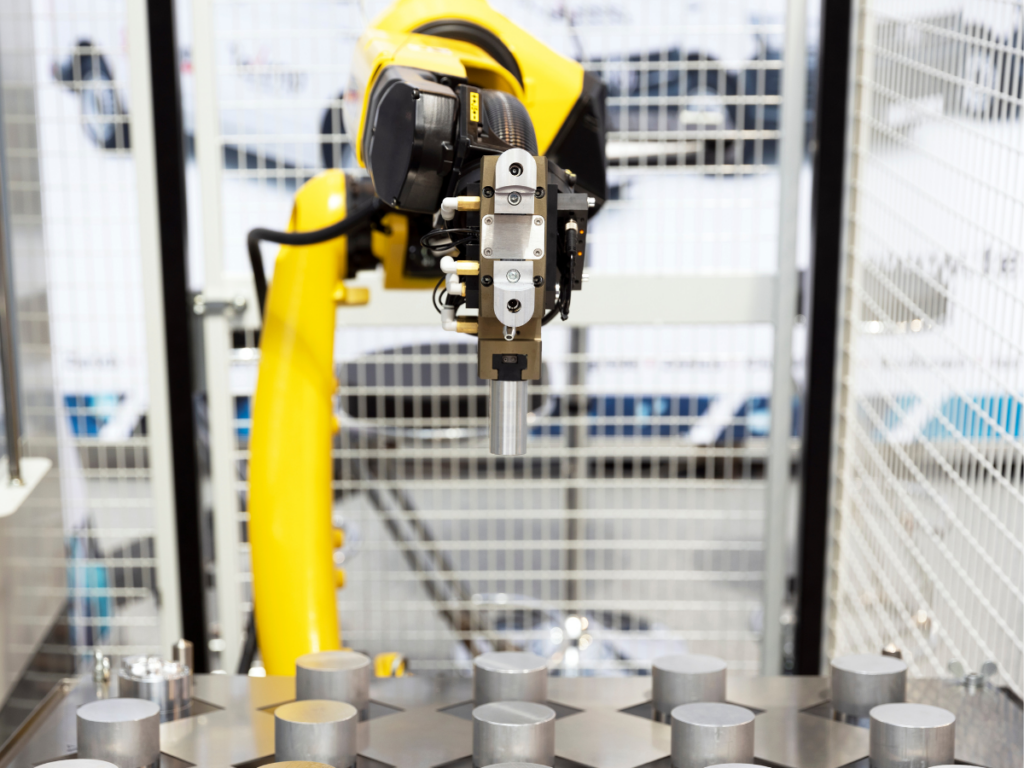Innovations in Machine Tending Robotics Overcome Challenges
While manufacturers have eagerly replaced many manual operations with robotic automation to boost efficiency and throughput, machine tending has remained a manual process because it is was considered too complex to automate. However, because manual machine tending is a time-consuming, inefficient, repetitive, boring and often injury-prone task, it is usually well suited for automation, so robotics manufacturers have been working to develop innovative technologies that will help alleviate deployment challenges, making machine tending robots a real possibility for even small- and mid-sized manufacturers.
What is Robotic Machine Tending?

Machine tending – the act of loading and unloading manufacturing machinery – has traditionally been handled manually; however, as worker shortages continue to plague the manufacturing industry, it is becoming increasingly difficult to keep machine tending positions staffed as they tend to be dull and often result in repetitive motion injuries among workers. In addition, manual machine tending is slow and inefficient and creates bottlenecks.
For these reasons, more manufacturers are becoming interested in robotic machine tending, a form of automation that more effectively and efficiently loads and unloads parts and performs several other functions, such as opening doors or loading pallets, in a single application. Robotic machine tending differs from typical robotic material handling applications because machine tending robots handle more than one task and communicate with the process equipment.
There are significant benefits associated with the use of machine tending robots, including enhanced productivity and efficiency, higher quality parts and products, greater yields and throughput and increased worker safety. However, manufacturers have been slow to adopt machine tending robots because there were notable challenges, such as the high cost of automating complex machine tending cells, difficulties with programming and integrating machine tending robots and a lack of flexibility.
4 Innovations that Overcome Robotic Machine Tending Challenges
Recognizing these obstacles, robotics manufacturers have recently made improvements and developed a new generation of machine tending robots that overcome known difficulties. Four of the most impactful trends and innovations are the development of lower priced cobots with enhanced capabilities, more intuitive programming, simplified machine interfacing and robotic automation that is easier to retool, redeploy and move around the facility for greater flexibility.
- Lower-priced, more capable cobots: Today’s collaborative or cobot systems usually offer lower prices plus greater capabilities that allow them to be more cost-effectively applied to machine tending tasks than traditional robot systems, even for small- to mid-sized manufacturers. While previous generations of cobots offered easier programming via demonstration, smaller sizes and safety features that allowed them to be used on bustling shop floors in close proximity to human employees, more recent developments, such as the ability to manage higher payloads, higher levels of dexterity and greater reach, allow modern cobots to offer superior efficiency in machine tending tasks. For example, today’s more dexterous cobots with higher payloads and greater reach are able to reach around, over and through obstacles to move heavier parts around two or three different machines more easily, effectively doubling or tripling machine tending capability.
- More Intuitive Programming Software: While programming robots to perform complex machine tending tasks was time consuming in the past, new, more intuitive software packages are simplifying the programming process. Many robot manufacturers offer software systems that generate templates for potential machine tending operations, such as mills or lathes. Once the operation is selected, software prompts the user to program key waypoints and then automatically generates the robot’s path based on the input. And, the advent of plug-and-play solutions is also making programming easier. For example, some robot manufacturers offer “ecosystems” that combine compatible components such as grippers, vision systems and safety systems with intuitive programming software and pre-loaded libraries and tools that simplify the process of changing components and “teaching” a machine tending robot to use them.
- Simplified Machine Interfaces: A crucial aspect of robotic machine tending is the ability of the robot to “communicate” with the machine, yet for many years, interfacing a robot with a complex machine, such as a CNC machine, was a major hurdle for robotic machine tending applications. However, recent developments include the introduction of simplified and standardized machine interfaces that allow robot “language” to more easily communicate with the codes used for programming CNC machines. Typically, these plug-and-play solutions involve a simple cable connection between the robot and the machine, permitting the robot to “talk” to the machine without the need for configuration and I/O exchanges. This technology significantly reduces time spent automating a CNC operation. Operators familiar with CNC operation can set the parameters on the CNC machine and program the robot motion through the CNC without performing programming on the robot itself.
- More Flexibility: Several developments have allowed machine tending robots greater flexibility on the manufacturing floor. First, the ability to retool and reprogram robots more easily using the plug-and-play functionality mentioned above allows operators to quickly retool the robot for different parts as needed or to reprogram them for various tasks throughout the facility, which provides more value for the cost of the robot and lends itself to the growing trend toward modularity in the form of reconfigurable robotic workcells. Some robot manufacturers are also combining cobots with mobile platforms such as autonomous mobile robots (AMRs) to create portable automation. These developments may allow robots to be transported to various machines and quickly reconfigured for multiple assignments. These emerging trends in robotic machine tending will permit more manufacturers to take advantage of automating traditionally manual machine tending tasks.
Contact JHFOSTER to find out how these innovations in machine tending robots can help your facility increase throughput, improve quality and enhance safety in a more flexible, simplified and cost-effective way.
